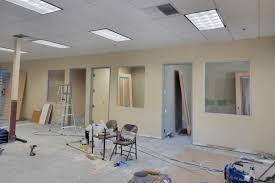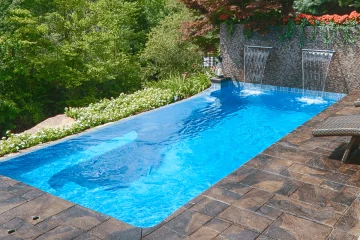When it comes to interior house painting in the U.S, proper surface preparation is a crucial step that should not be overlooked. While it may be tempting to jump straight into applying a fresh coat of paint, taking the time to prepare the surfaces properly will ensure a smooth and long-lasting finish. Surface preparation involves cleaning, repairing, and priming the walls, ceilings, and other surfaces before painting. In this article, we will explore the importance of proper surface preparation in interior house painting and its impact on the overall quality and durability of the paint job from Arizona Painting Company.
Enhances Paint Adhesion:
Proper surface preparation is essential for ensuring good paint adhesion. Surfaces that are dirty, dusty, or greasy can prevent the paint from adhering properly, leading to peeling, flaking, or premature wear. By thoroughly cleaning the surfaces, removing any dirt, grime, or grease, you create a clean and receptive base for the paint to adhere to. This ensures that the paint forms a strong bond with the surface, resulting in a smooth and long-lasting finish.
Smooths Out Imperfections:
Surface preparation allows you to address any imperfections on the walls or ceilings before painting. This includes repairing cracks, holes, dents, or uneven surfaces. By filling in these imperfections with spackling compound or putty and sanding them smooth, you create a seamless and even surface for the paint. This not only enhances the aesthetic appeal of the finished paint job but also ensures that the paint goes on smoothly and evenly.
Improves Paint Coverage:
Proper surface preparation improves paint coverage, allowing you to achieve the desired color and finish with fewer coats. When the surfaces are clean, smooth, and properly primed, the paint can be applied more evenly and with better coverage. This can save your time and money, as you won’t need to apply as many coats of paint to achieve the desired result.
Prevents Stains and Bleeding:
Surface preparation helps prevent stains and bleeding from underlying materials or previous paint colors. For example, if you are painting over a dark or heavily stained surface, proper surface preparation can include applying a stain-blocking primer. This primer creates a barrier between the surface and the new paint, preventing any stains or discoloration from bleeding through. By addressing these issues during surface preparation, you can ensure that the final paint job looks fresh and clean.
Extends Paint Durability:
Proper surface preparation significantly extends the durability of the paint job. By addressing any surface imperfections, ensuring good adhesion, and applying an appropriate primer, you create a strong and protective foundation for the paint. This helps the paint withstand daily wear and tear, such as cleaning, scuffing, or exposure to sunlight. A well-prepared surface reduces the chances of peeling, cracking, or chipping, ensuring that the paint job remains intact and looks fresh for a longer period.
Saves Time and Money:
While it may be tempting to skip or rush through the surface preparation process, doing so can actually end up costing you more time and money in the long run. Inadequate surface preparation can result in paint failure or the need for repainting sooner than expected. This means additional time, effort, and cost spent on redoing the paint job. By investing the necessary time and effort into proper surface preparation initially, you can save yourself the hassle and expense of having to redo the paint job later on.
Enhances Overall Appearance:
Proper surface preparation is crucial for achieving a professional and high-quality finish. When the surfaces are clean, smooth, and properly primed, the paint goes on more evenly and with better coverage. This results in a more attractive and visually appealing paint job. Whether you are repainting your walls, ceilings, or trim, proper surface preparation ensures that the paint enhances the overall appearance of your home, making it look fresh, clean, and well-maintained.
In conclusion, proper surface preparation is a critical step in interior house painting that should not be overlooked. It enhances paint adhesion, smooths out imperfections, improves paint coverage, prevents stains and bleeding, extends paint durability, saves time and money, and enhances the overall appearance of the paint job. By investing the necessary time and effort into surface preparation, you can achieve a professional and long-lasting finish that transforms the look and feel of your home. So, before picking up that paintbrush, remember the importance of proper surface preparation to ensure the best possible results. To learn more about interior house painting visit here to Related Post.




